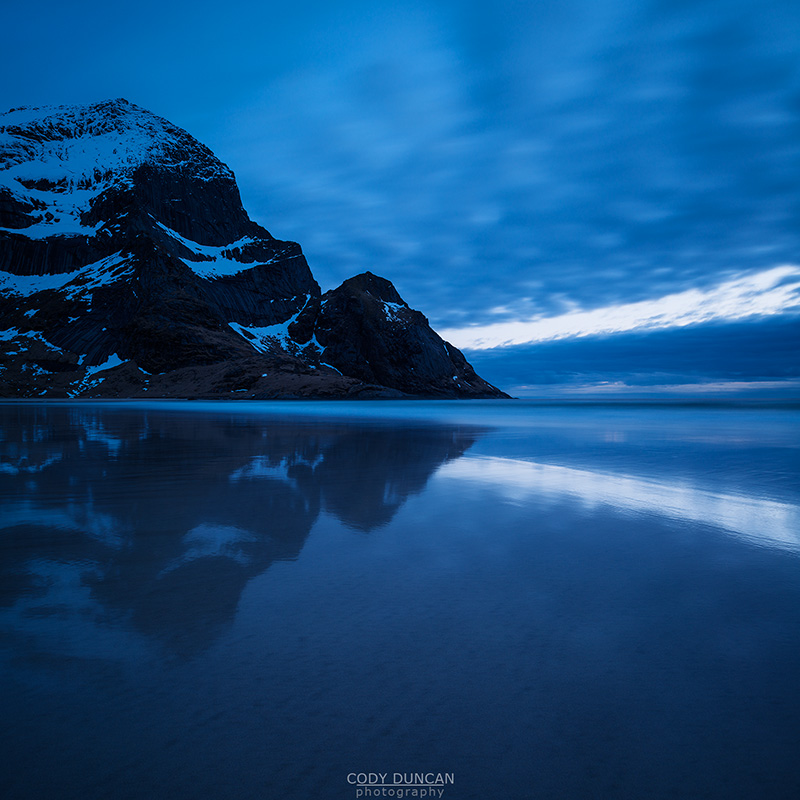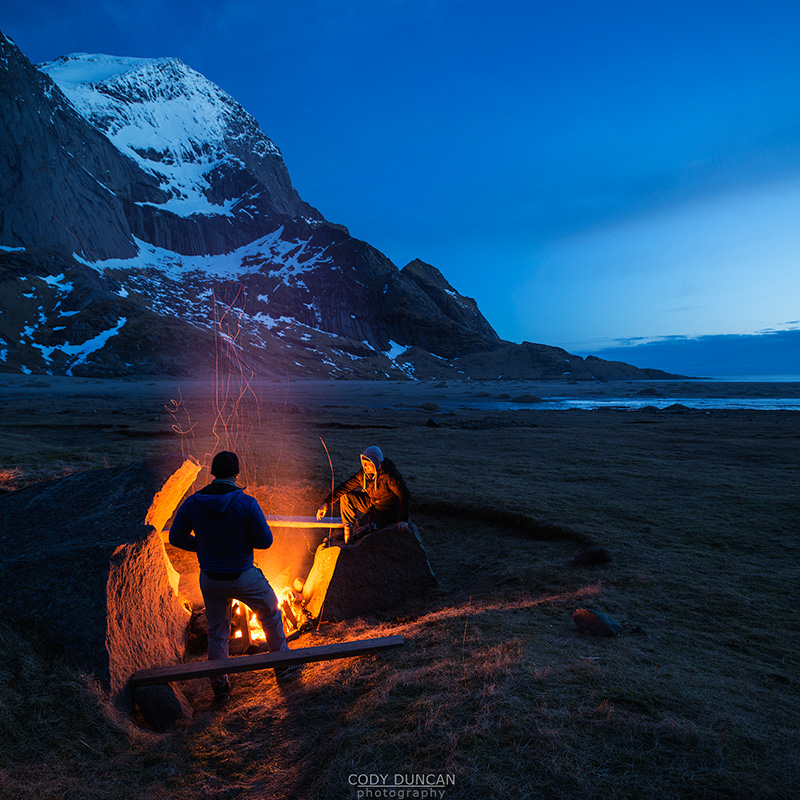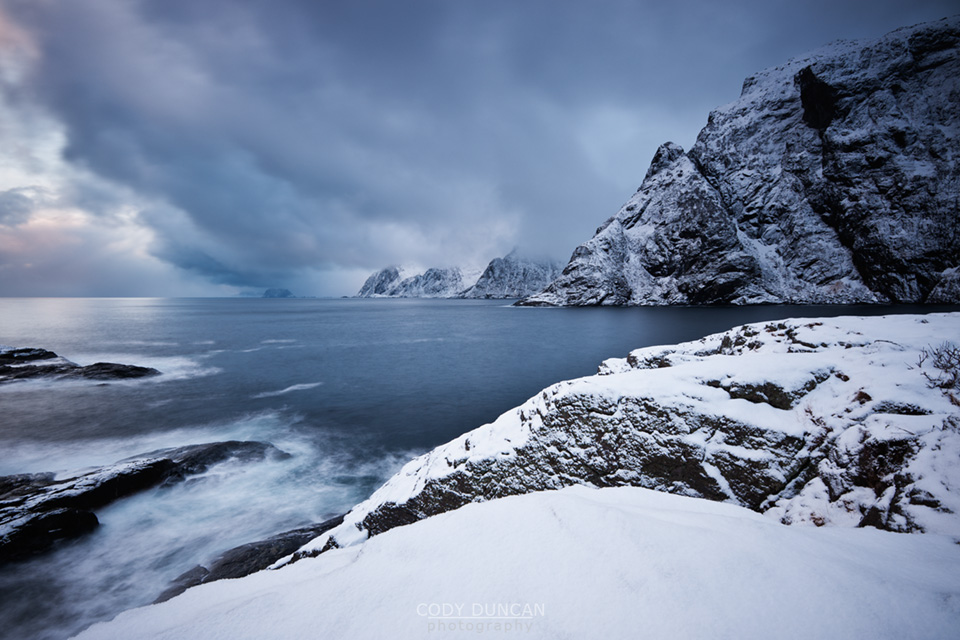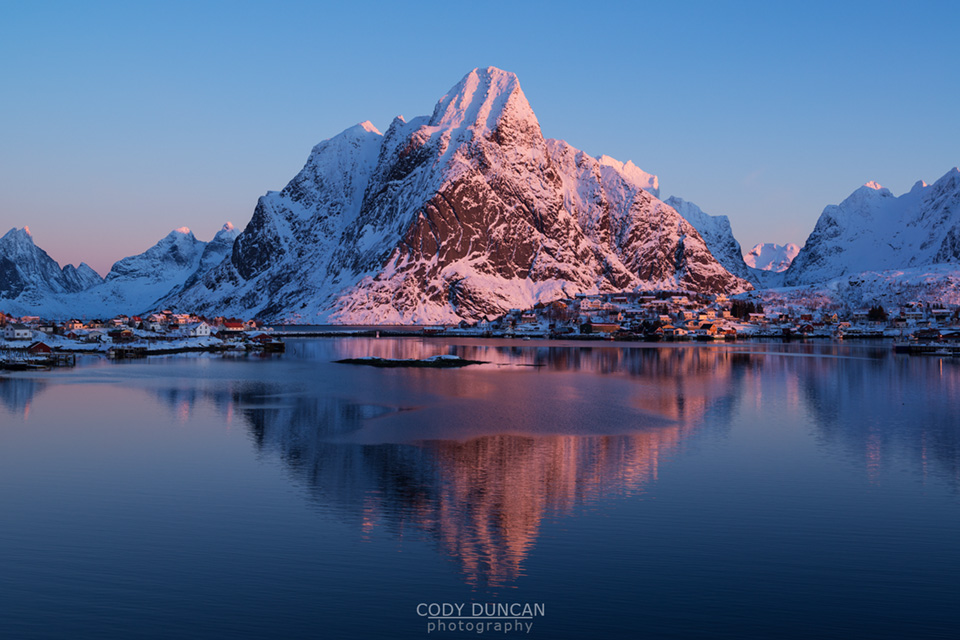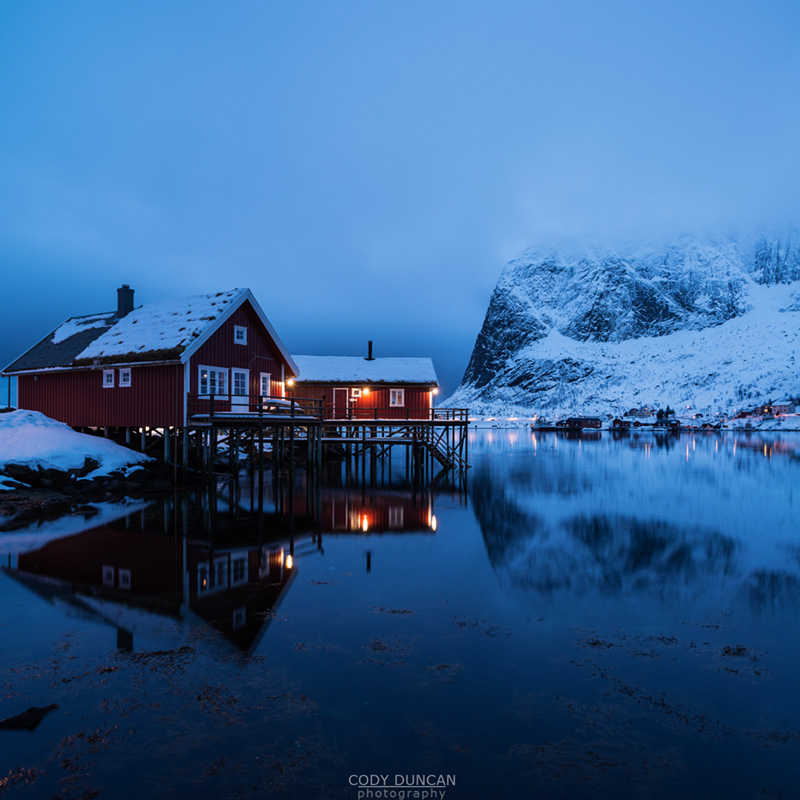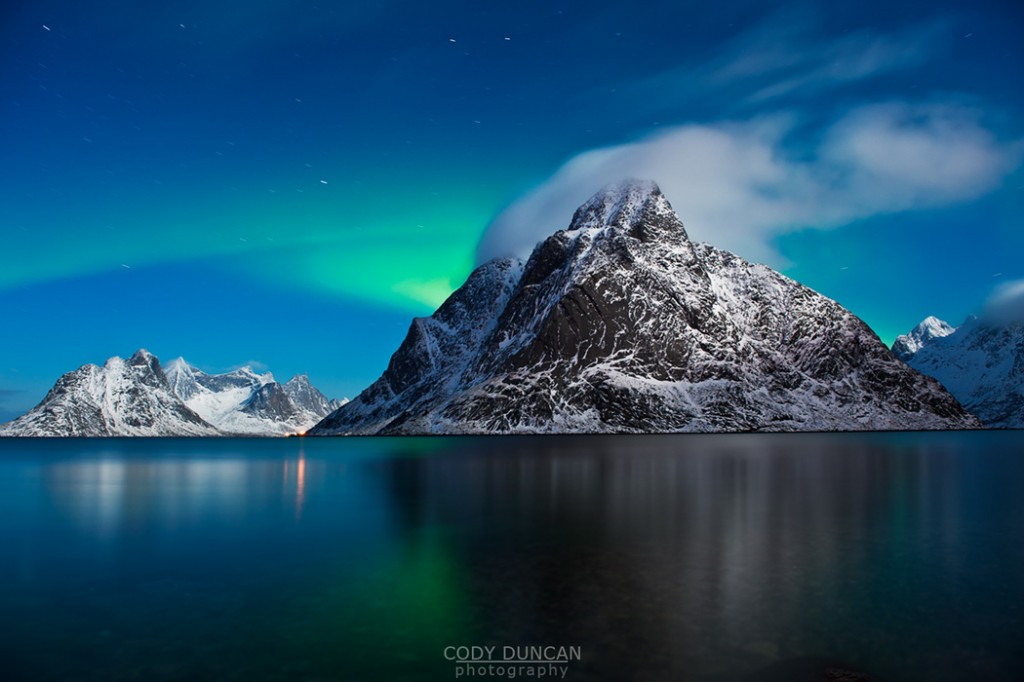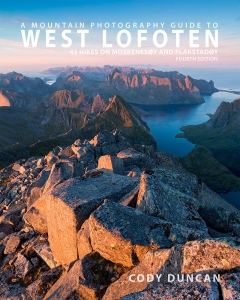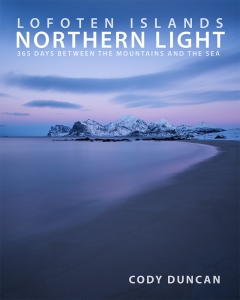Friday Photo #24 – Bunes Beach Mountain Reflection
Photo: Mountain reflection on Bunes Beach, Moskenesøya, Lofoten Islands. Apri 29, 2013. 22:33
After only a few days on Lofoten with my my Aussie travel companions Adam and Rod, I had received the friendly nickname of ‘Captain Wetfoot,’ based upon my proven abilities to almost always end up in the water somehow. This night shooting on Bunes beach would be no exception.
Shooting with at 24mm tilt-shift lens to end up with a square crop means I need to shoot at least 2 photos. And with each photo having a 60 second exposure (+noise reduction) means I need to stand in the same place for at least 4 minutes. The trick is to find the balance point where the highest tide will just barely reach you. Too far from the sea and the foreground might be a bit dull. Too close to the sea, and you’ll end up named Captain Wetfoot.
The wet feat I can deal with, especially with the size of the campfire I would build on my return. But since I generally only carry a light tripod, any incoming waves will tend to shake the tripod or sink the legs into the sand ever so slightly, which is often enough to add blur to the scene. Thus I sit there anxiously as the seconds tick by on my watch, hoping the water gets close, but not too close. If the wave is small, no problem. But if I’m sent running halfway through the second shot, it means I have to start all over again. So 4 minutes easily turns into a half hour or more for a single photo.
Camera Info:
Nikon D800
Nikon 24mm f/3.5 tilt-shift
24mm
ISO 100
f 11
61 sec
WB Daylight
2 images – top/bottom

